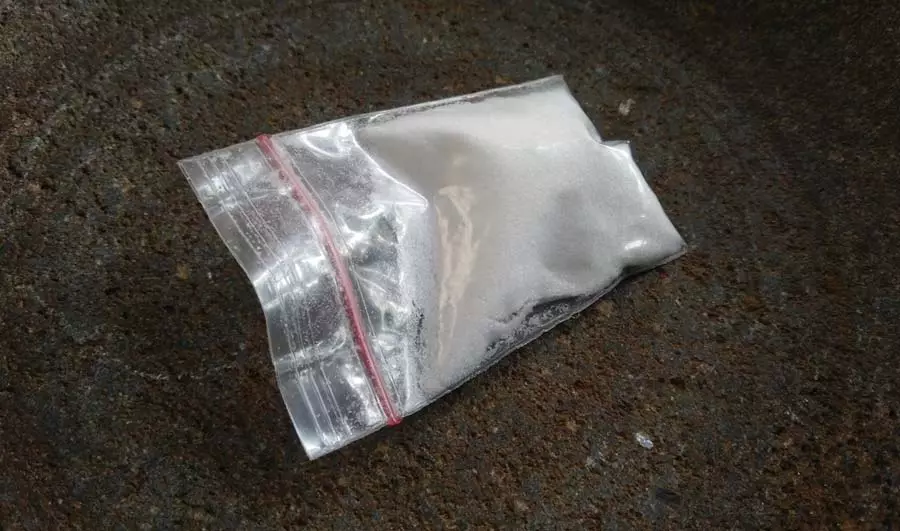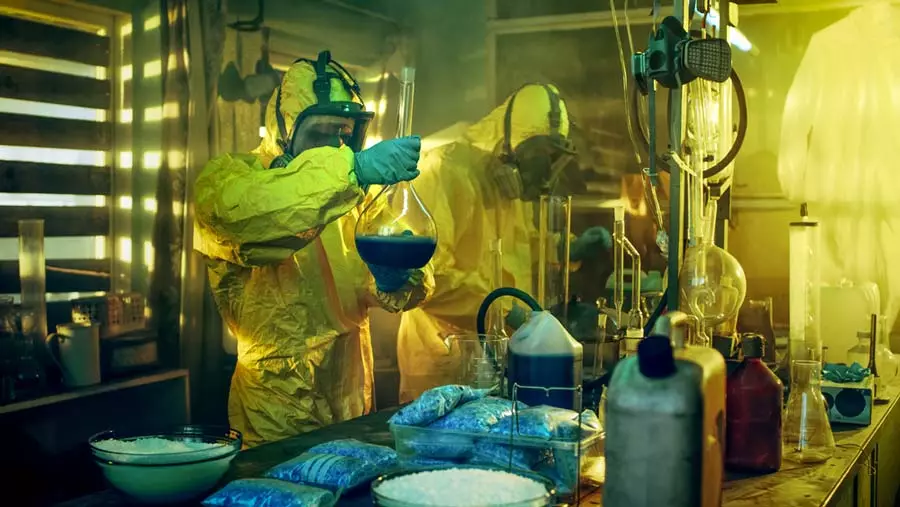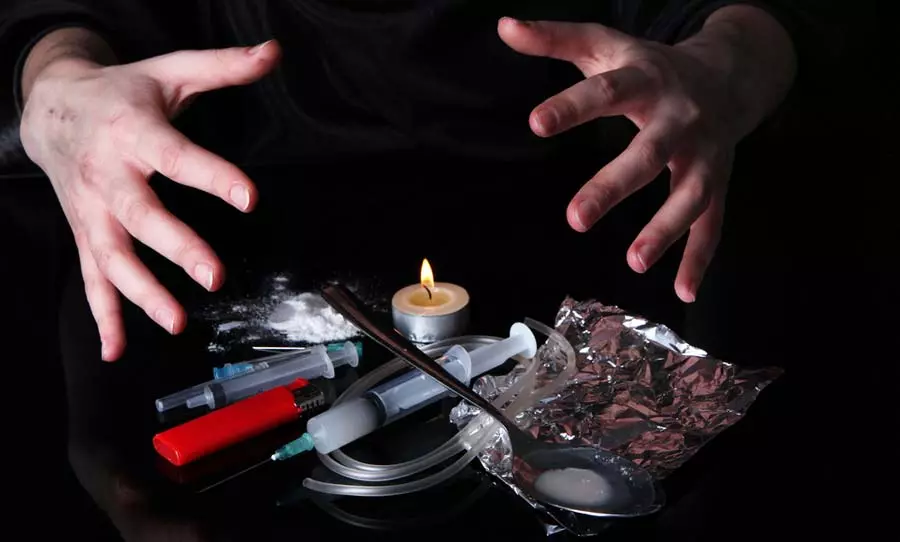What does Meth Look Like?

Identifying Crystal Meth Use
What does meth look like? Determining whether or not a friend or spouse is abusing methamphetamine might be difficult. Meth comes in a wide variety of forms, including pill form, and its use can take many forms. The drug is extremely addictive regardless of the state it’s in.
Meth is a stimulant, entactogen, and hallucinogen that belongs to the phenethylamine class of drugs. It was sold under the brand name Desoxyn and was used to treat attention deficit hyperactivity disorder and narcolepsy. The medicine enhances one’s ability to maintain energy and focus.
Although meth in prescription form is readily available, most people take it for recreational purposes. Variations include liquid meth, powdered meth, meth pills, and more. Liquid meth drug smugglers use this tactic to disguise their cargo, making it easier to cross the border.
Drugs like Adderall that are available with a doctor’s prescription share chemical similarities with meth. Amphetamine and dextroamphetamine are both components of Adderall. It has the effect of reducing the harshness of the meth high but still falls under the category of meth pills.
Adderall is used to treat attention deficit hyperactivity disorder and sleep apnea. It’s also extremely addicting, just like meth.
If you suspect someone you love abusing meth, this article could be a lifesaver. Use these tips provided by Resurgence Texas to find out with more certainty. This should answer your questions regarding “what does meth look like?” and help you to find effective forms of treatment for your loved one today!
Addiction Treatment that
Just Works
Individualized treatment programs delivered in a comfortable, relaxed setting promote healing in your recovery journey.
How Does Methamphetamine Hydrochloride Make You Feel?
This central nervous system stimulant drug can have profound effects on the body, mind, and soul, depending on the dosage. It has the potential to make you feel as if a light has been turned on inside of you.
Symptoms consist of a rise in the individual’s core temperature, heart rate, blood pressure, and respiration rate. In extreme cases, users may die from convulsions, stroke, cardiovascular collapse, or both.
How Does Crystal Methamphetamine Work?
Methamphetamine is sold in a variety of forms, including powdered meth crystalline powder, crystals, tablets, and liquid meth. It’s highly versatile, so it can be difficult to identify the meth look. In small amounts, there is no meth smell unless it’s burnt. Compared to other stimulant drugs, methamphetamine stands out for its potent effects and heightened overdose risks, necessitating a deeper understanding of its unique dangers and the importance of treatment options for addiction.
Recent research on meth users, both past and present, has found that the majority (66%) of users smoke the drug, while 24% have injected it and 10% snort it.
About half of the participants used more than one route of administration, and 7% used all four during the course of their addiction.
What Does Meth Look Like: Powdered Meth

What does meth look like when it’s powdered meth? Methamphetamine sold on the streets is typically a bitter white crystalline powder. All possible hues are yellow-gray, orange, brown, and pink meth powder. However, the powder form of meth is typically white or slightly yellow. Crank, Mexican crack, redneck cocaine, and “the speed” are all slang terms for meth powder. These are typically low-grade, crude forms of the drug.
Meth powder, a stimulant, is used to make speedballs, which combine meth with a depressant such as oxycodone or heroin. The effects of a speedball are said to be stronger and last longer than those of either substance used singly.
Meth powder is indistinguishable from other powdered drugs. Whether or not it contains buffering or psychoactive chemicals cannot be determined without testing.
What Crystal Meth Looks Like: Pure Meth is Crystalline and Often Appears Ice-like
When it comes to methamphetamines, pure meth, or crystal, is at the top of the food chain. It looks like ice, glass, or rock shards, and it is found in glittering, chunky, bluish-white crystal form. It goes by many names on the black market, including crystal, blade, glass, ice, shards, and quartz, and it doesn’t come cheap.
This crystal meth is purer than others since it has a larger percentage of the active ingredient. Even while crystal meth is typically smoked, it can also be melted into a liquid and injected.
Liquid Meth
Just by adding water to meth powder, you can turn it into a liquid. Dissolving meth powder happens either for smuggling reasons or because the user wants the drug to be injectable. Liquid meth can be converted back to powder by boiling off the water. Meth is injected into the body or inhaled by steam from boiling water.
This liquid form is crystal clear. It may have a very subtle hue depending on its purity and the materials used to dilute it. Meth becomes almost undetectable in its liquid form.
Cooking Meth: Crystal Meth Labs
Crystal meth is completely synthetic and artificial. It’s entirely man-made. It’s not a plant-based chemical like many others. Crystal meth is so simple to produce that many addicts build their own supply in makeshift labs and resell the leftovers to cover their expenses.
Frightening things happen in meth labs. Nearly twenty percent are found after they have already exploded or burned up. However, new ones spring up, and crystal meth production never stops. However, more recently, super labs have been the source of most of the meth use in the United States.
When methamphetamine is produced, workers are constantly exposed to poisonous chemicals, hazardous waste, and flammable solvents. As a profession and a way of life, working in a meth lab is fraught with risk.
The Many Hazards of Cooking Meth

These symptoms may develop after brief contact with a crystal meth laboratory:
- Problems breathing
- Dizziness
- Physical discomfort in the chest
- Loss of coordination
- Cough
- Toxic shock syndrome
- Experiencing burns to the face, including the lips, tongue, and nose
Human and animal toxicity studies have shown scientists that the chemicals used to produce meth can lead to chronic health problems including the following:
- Infertility and recurrent miscarriages
- Defects At Birth
- Harm to the brain
- Injury to the kidneys
- Damage to the liver
- Cancer
Addiction Treatment that
Just Works
Individualized treatment programs delivered in a comfortable, relaxed setting promote healing in your recovery journey.
The Intense and Immediate Effects of Meth
Meth produces an immediate and intensely euphoric high that lasts for hours after the initial dose is taken. Once the initial euphoria wears off, the effects of the drug can linger for up to 14 hours. When and for how long effects last are affected by how the drug was taken.
Nearly half of the people polled in a 2021 survey of former and current meth addicts reported using the drug every day. About a quarter of them did it daily or several times weekly. The following are some of the more popular and pleasurable outcomes of meth use:
- Boosts concentration
- Enhanced endurance
- Reduces hunger
- Sexual performance is improved
Additionally, meth use can lead to violent behavior among some users, highlighting the severe and long-lasting effects of the drug on behavior.
Meth users frequently go without sleep for several days at a time. Typically, a person who has been abusing substances will cease when they are unable to sustain any more of the drug.
The Side Effects of Methamphetamine Use
Drug addiction and substance abuse, particularly in the context of meth use, represent significant health challenges, altering brain function and leading to a range of negative physical and psychological effects. When a person is severely addicted to meth, they often feel less of the drug’s initially desirable effects and more of its negative ones:
- Rashes and pimples
- Impairment of Speech
- Premature aging of the body
- Rotten teeth and meth mouth
- Sustained inability to sleep
- Convulsions and fits of hysteria
- Psychosis
- Disorientation and memory loss
- Rapid and significant weight reduction
- Excessive sagging of the facial skin
- Random aggression
- Itchy, intense scratching
- Distress and irritability
- Stroke
- Death
Internal overheating, heart attacks, organ failure, rapid and irregular heartbeat, and death can result from a meth overdose.
Meth Addiction Symptoms
Methamphetamine stimulates the reward circuitry of the brain by elevating dopamine levels. The release of dopamine results in a positive emotional state. Pleasant-feeling drugs have a high potential for abuse.
When one consumes meth, their brain is repeatedly flooded with dopamine, which can lead to long-term dopamine dysregulation. Long-term meth use can damage memory, create blurred vision, and make it difficult to pick up new motor skills.
Meth usage has been linked to psychotic episodes in some users. Hallucinations, both aural and visual, delusions, paranoia, and irritability are all possible side effects of psychosis. Meth users in the midst of a psychotic episode may scratch violently, convinced that bugs are crawling all over their bodies. Skin lesions, abrasions, and rashes are the result of compulsive scratching and picking.
Recognizing these symptoms is crucial for seeking addiction treatment early. Addiction treatment encompasses a range of support services, including professional counseling and drug treatment programs, which are vital for recovery. Involving trusted family and friends and understanding the long-term effects of addiction are essential steps in the journey towards recovery.
Tricyclic or 15-day bouts of sleeplessness are common among people who regularly use meth. Tweaking is slang for continuous meth consumption. It is at the tweaking phase of meth use that the most harmful effects manifest.
When facing the user, rapid eye movement can become apparent in some cases. The individual may have a jumbled speech pattern and a stutter in their gait. Tweaker behavior typically includes acts of violence and criminality.
Knowing the Signs of Meth Use In Your Home

Paraphernalia used in the production or use of methamphetamine is the surest sign that the drug is present in your home.
- Broken bulbs or empty straws
- Instruments such as needles and syringes
- Lighters
- Ziploc bags
- Blades
- Packaging and containers made of aluminum foil and tin foil
- Scratched mirrors from chopping lines
- Tie-offs for shooting meth
A meth test only requires a trace amount of residue from a meth pipe. You may get a test at any store that sells medicine, including drugstores and bargain stores like Walmart.
What Does “Tweaking” Actually Mean?
Tweaker is a slang term for people who are obviously addicted to meth. Different withdrawal symptoms can develop for shorter or longer periods of time after drug use is stopped. You may first need to sleep for two to four days straight, but your doctor can give you medication to help with the negative side effects. However, the situation physical situation improves rapidly. Initial withdrawal symptoms typically subside within a week or two:
- Brain fog
- Chapped lips
- Dehydration
- Headaches
- Discomfort and spasms in the muscles
- Severe hunger
- Extreme exhaustion
- Hallucinations, paranoia, and anxiety
The mental effects of meth withdrawal may drag on for an extended period and include:
- Uneven or broken sleep schedules
- Long-term memory loss
- Depression and anxiety
Get Help with Meth at Resurgence Texas Now
At Resurgence Texas , we can help with meth abuse. This drug doesn’t have to control your loved one’s life or yours – for more information, contact a member of our Admissions team today.
If you or someone you know is struggling with meth or other drugs, we encourage seeking help now.
All calls are completely confidential and discreet, so please reach out with confidence today to get treatment options for yourself and your loved one!
Addiction Treatment that
Just Works
Individualized treatment programs delivered in a comfortable, relaxed setting promote healing in your recovery journey.
